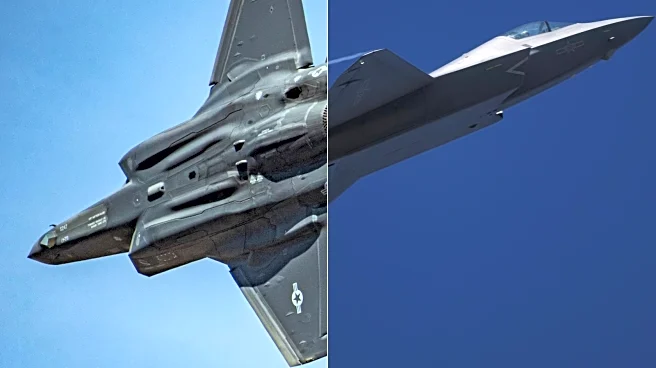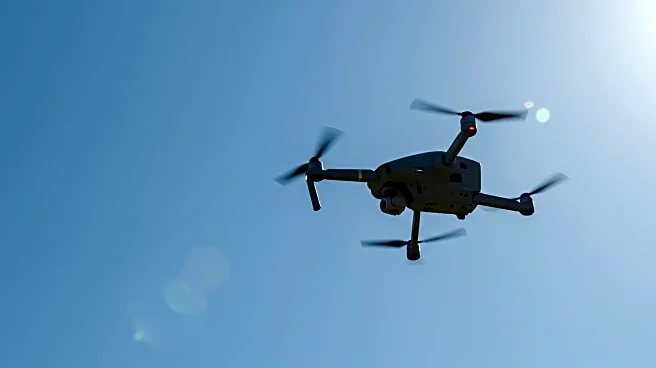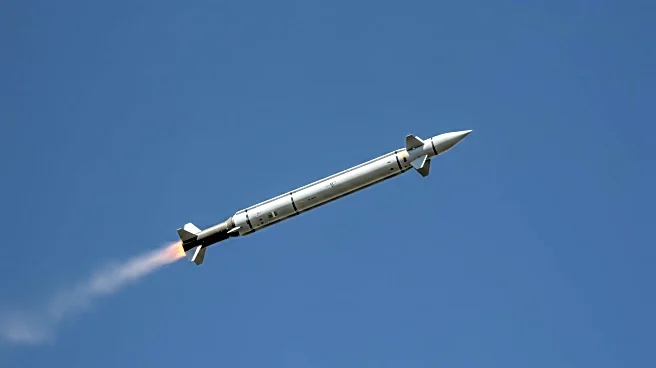What's Happening?
DARPA has announced the development of the Digital RF Battlespace Emulator (DRBE), a high-fidelity, real-time virtual radio frequency test range. This system is designed to emulate electronic warfare scenarios, providing a new tool for testing and training with AI-enabled EW capabilities. The DRBE system allows for complex interactions of synthetic RF entities within a software-defined environment, offering ultra-low latency throughput necessary for modern EW tactics. The first DRBE system will be integrated into a US Navy laboratory by late 2025, enhancing the Department of Defense's testing and evaluation infrastructure.
Why It's Important?
The DRBE system represents a significant advancement in electronic warfare technology, enabling the U.S. military to simulate complex RF engagements with precision. This development is crucial for maintaining spectrum supremacy and addressing the challenges posed by digitized battlefield technologies. The ability to replicate electronic environments will likely accelerate the development of next-generation RF systems, strengthening the U.S. defense capabilities against emerging threats. As geopolitical tensions rise, refining EW tactics becomes increasingly important for national security.
What's Next?
The integration of the DRBE system into military testing facilities will likely lead to further advancements in electronic warfare capabilities. As the system is adopted, it may drive innovation in defense technology, particularly in areas like AI-enabled EW systems and RF-based countermeasures. The U.S. military may also explore collaborations with other defense agencies to expand the use of the DRBE system, potentially influencing global EW strategies.
Beyond the Headlines
The development of the DRBE system highlights the growing importance of software-driven solutions in defense technology. As electronic warfare becomes more complex, the need for advanced simulation tools will continue to rise. This shift may lead to increased investment in digital infrastructure and AI capabilities within the defense sector, potentially reshaping military strategies and operations.












